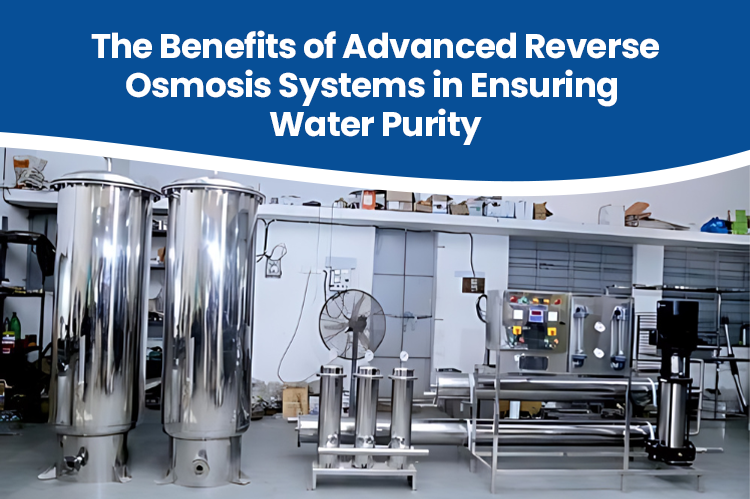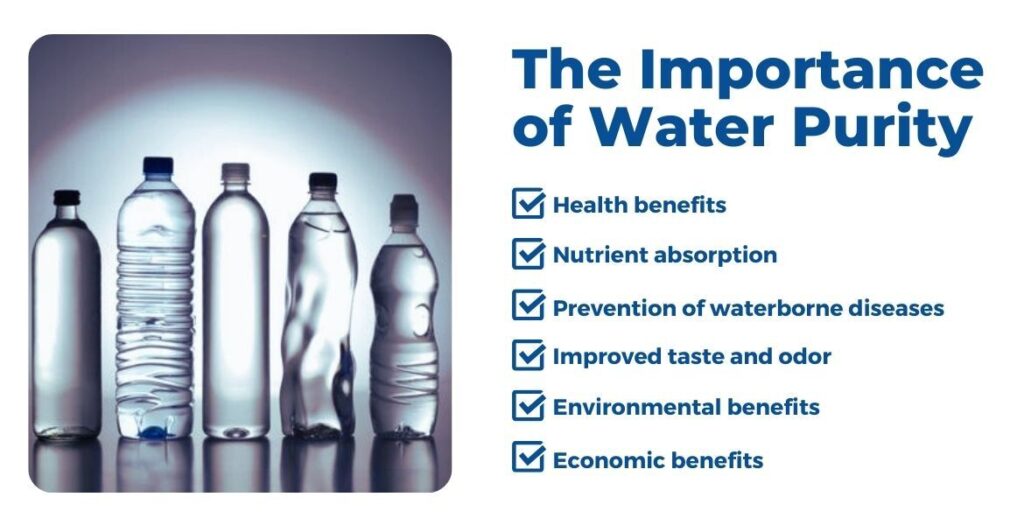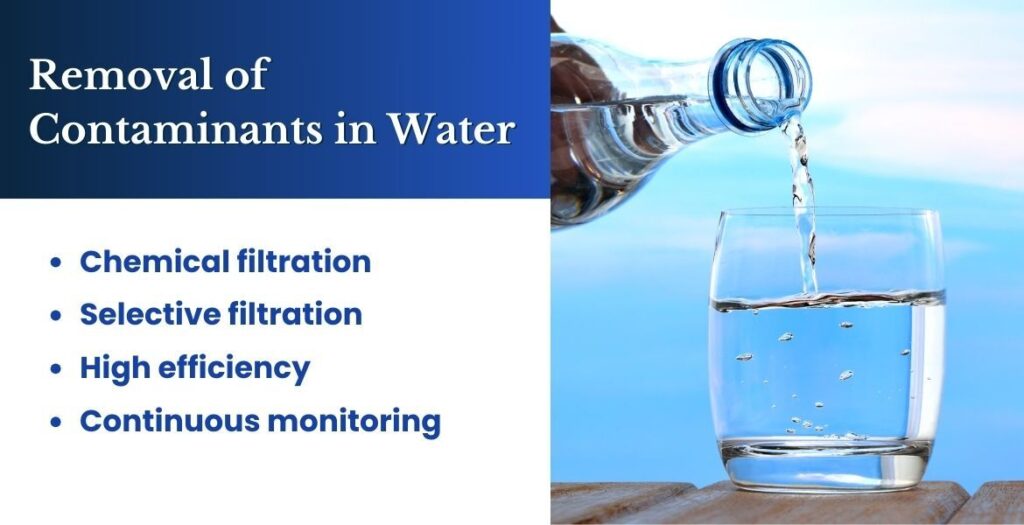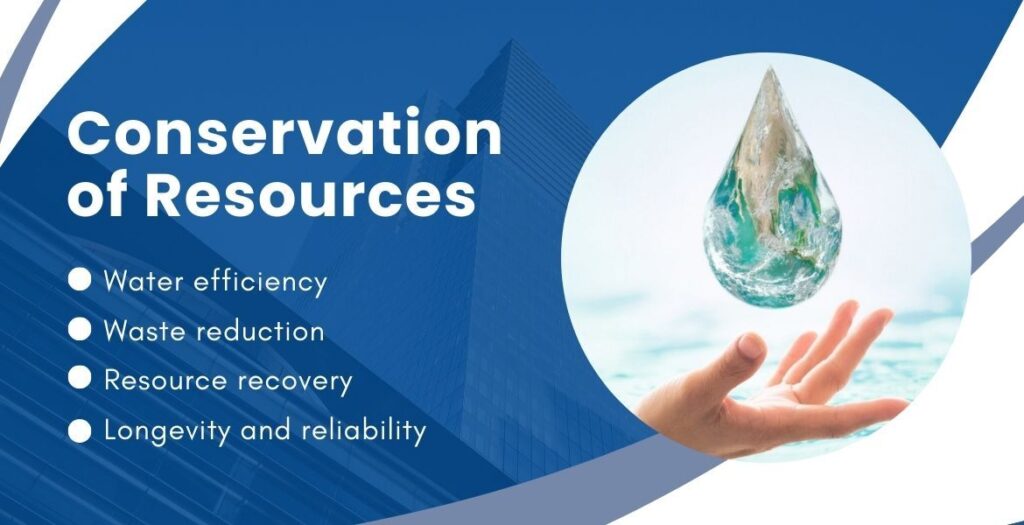
Table of Contents
The Benefits of Advanced Reverse Osmosis System in Ensuring Water Purity
June 17, 2024
Reverse osmosis system (RO) is a water purification process that utilizes a partially permeable membrane to remove ions, molecules, and larger particles from drinking water. This process helps to ensure that the water is free from contaminants, making it safe for consumption and other applications. RO systems are widely used in residential and commercial settings due to their effectiveness in producing clean and pure water.
The Importance of Water Purity

Water is essential for life, and its purity is crucial for maintaining health and well-being. Pure water is not only important for drinking but also for various other purposes, including cooking, cleaning, and industrial processes. Here are some key reasons why water purity is of utmost importance:
- Health Benefits: Consuming impure water can lead to various health issues, including gastrointestinal problems, skin diseases, and even more serious conditions such as cholera and typhoid. Pure water, on the other hand, is essential for proper hydration and overall health.
- Nutrient Absorption: Impurities in water can interfere with the body’s ability to absorb nutrients from food. Pure water helps ensure nutrients are properly absorbed, promoting better health and well-being.
- Prevention of Waterborne Diseases: Waterborne diseases such as diarrhoea, dysentery, and cholera are often caused by contaminated water. Ensuring water purity is essential for preventing these diseases and maintaining public health.
- Improved Taste and Odor: Pure water tastes and smells better than water contaminated with impurities. This is especially important for drinking water, as it can encourage people to drink more water and stay hydrated.
- Environmental Benefits: Using pure water in industrial processes helps to reduce pollution and protect the environment. Additionally, pure water is essential for maintaining aquatic ecosystems and biodiversity.
- Economic Benefits: Investing in water purification systems can lead to long-term cost savings by reducing the need for bottled water and medical treatments for waterborne diseases.
Enhanced Filtration and Purification: Ensuring Clean and Safe Water
Water purity is a critical factor in maintaining public health and well-being, and advanced reverse osmosis systems (RO) play a crucial role in achieving this goal. Here’s how enhanced filtration and purification by advanced reverse osmosis systems ensure water purity:
- Removal of Contaminants: These systems use a semi-permeable membrane to remove contaminants such as bacteria, viruses, dissolved solids, and other impurities from water. This process effectively purifies the water, making it safe for drinking and other purposes.
- High Efficiency: These systems are designed to operate at high efficiency, removing up to 99% of contaminants from water. This high level of efficiency ensures that the water meets the required purity standards, providing peace of mind to consumers.
- Cost-Effectiveness: The initial cost of installing an advanced RO system may be higher than other water treatment methods, the long-term cost savings can be significant. These systems require less maintenance and use fewer chemicals then traditional water treatment methods, resulting in lower operating costs over time.
- Quality Assurance: These systems are designed to meet stringent quality standards, ensuring that the water they produce is safe and pure. Many systems also include monitoring and control features to ensure that the water quality remains consistent.
Advanced reverse osmosis systems are highly effective at enhancing filtration and purification processes, ensuring water purity. Additionally, they are cost-effective, environmentally sustainable, and assure water quality. Overall, advanced RO systems are an essential tool in ensuring the availability of clean and safe water for all.
Removal of Contaminants in Water

Water purity is essential for maintaining public health and well-being, and advanced reverse osmosis (RO) systems are highly effective at removing contaminants to ensure water purity. These systems use a semi-permeable membrane to remove a wide range of contaminants from water, including bacteria, viruses, dissolved solids, and other impurities. Here’s how advanced reverse osmosis systems remove contaminants to ensure water purity:
- Chemical Filtration: In addition to physical filtration, advanced reverse osmosis system may use chemical filtration to remove certain contaminants. This may involve the use of activated carbon filters or other chemical treatment methods to remove organic compounds, chlorine, and other chemicals from the water.
- Selective Filtration: Advanced RO systems are designed to selectively remove contaminants while allowing essential minerals to pass through. This ensures that the water remains safe for consumption and retains its natural taste and quality.
- High Efficiency: Advanced RO systems are highly efficient at removing contaminants from water, often achieving removal rates of up to 99%. This high level of efficiency ensures that the water meets the required purity standards and is safe for drinking and other uses.
- Continuous Monitoring: Many advanced RO systems include monitoring and control features that ensure the system is operating efficiently and effectively. This helps to maintain water purity and ensures that the system is providing clean, safe water at all times.
Advanced reverse osmosis systems are highly effective at removing contaminants from water to ensure water purity. With their high efficiency and continuous monitoring features, advanced RO systems are an essential tool in ensuring the availability of clean and safe water for all.
Efficiency in Water Treatment
Efficiency is a key factor in water treatment processes, directly impacting the effectiveness, cost, and sustainability of providing clean and safe water. Advanced reverse osmosis (RO) technology exemplifies high efficiency in water treatment, ensuring superior water purity through innovative technology and optimized processes. Here’s how these systems achieve remarkable efficiency in water treatment:
- High Contaminant Rejection Rate: These systems are designed to remove a wide range of contaminants, including bacteria, viruses, dissolved solids, heavy metals, and organic compounds. With a rejection rate of up to 99%, these systems efficiently produce highly purified water, meeting stringent quality standards.
- Energy Efficiency: Modern systems incorporate energy-saving technologies that reduce the amount of power required for the filtration process. Innovations such as energy recovery devices and high-efficiency pumps minimize energy consumption, making the water treatment process more sustainable and cost-effective.
- Automation and Monitoring: The system often includes automated controls and real-time monitoring capabilities. These features enable precise control of the treatment process, allowing for adjustments based on water quality and system performance. Continuous monitoring ensures optimal operation and enhances overall efficiency.
- Minimized Waste: Efficient systems are designed to minimize wastewater production. Innovations such as multi-stage RO and concentrate recycling help to reduce the volume of brine, or waste concentrate, generated during the treatment process. This not only conserves water but also reduces the environmental footprint of the treatment facility.
The efficiency of advanced reverse osmosis systems in water treatment is a testament to their ability to ensure water purity sustainably and cost-effectively. Their efficiency not only enhances the quality of treated water but also contributes to the long-term sustainability and economic viability of water treatment processes.
Conservation of Resources

Conservation of resources through advanced reverse osmosis (RO) systems is a critical aspect of sustainable water management. These systems play a vital role in ensuring efficient use of water resources by effectively removing contaminants and producing clean, safe drinking water. Here are some key points on how advanced RO systems contribute to resource conservation:
- Water Efficiency: Advanced reverse osmosis system are highly efficient in removing impurities from water, reducing the need for excessive water consumption. They can treat various water sources, including brackish water and seawater, making them valuable in areas facing water scarcity.
- Waste Reduction: These systems produce less wastewater compared to conventional water treatment methods, reducing the amount of water that goes to waste. This not only conserves water resources but also minimizes the environmental impact of wastewater disposal.
- Resource Recovery: Some advanced systems are equipped with technologies that allow for the recovery of valuable resources from the treated water, such as minerals and nutrients. This promotes circular economy principles by reusing resources that would otherwise be lost.
- Longevity and Reliability: Advanced systems are built to be durable and reliable, ensuring long-term performance with minimal maintenance requirements. This extends the lifespan of the system, reducing the need for frequent replacements and conserving resources.
Advanced reverse osmosis technology plays a crucial role in conserving water resources and promoting sustainable water management practices. Its efficiency, reliability, and environmental benefits make it a valuable technology in addressing water scarcity and ensuring access to clean water for future generations.
Versatility and Adaptability
Versatility and adaptability are key features of advanced reverse osmosis (RO) systems, making them highly valuable in various applications and environments. These systems can be tailored to meet specific water treatment needs, making them versatile in addressing a wide range of challenges. Here’s how these qualities are showcased in advanced RO systems:
- Water Source Flexibility: Advanced reverse osmosis system can effectively treat different water sources, including brackish water, seawater, and wastewater. This versatility allows them to be used in diverse settings, from industrial applications to residential water treatment.
- Modular Design: Many advanced systems are designed with a modular approach, allowing for easy customization and scalability. This means that the system can be expanded or modified to accommodate changing water treatment requirements, making it adaptable to evolving needs.
- Multi-Stage Treatment: Advanced systems often incorporate multiple stages of treatment, such as pre-filtration, membrane filtration, and post-treatment. This multi-stage approach enhances the system’s ability to remove a wide range of contaminants, making it adaptable to varying water quality conditions.
- Remote Monitoring and Control: Many advanced systems are equipped with remote monitoring and control capabilities, allowing operators to monitor system performance and make adjustments remotely. This feature enhances the system’s adaptability by enabling real-time response to changing water conditions.
The versatility and adaptability of advanced reverse osmosis systems make them highly effective in addressing a wide range of water treatment challenges. Their ability to treat diverse water sources, modular design, energy efficiency, and integration capabilities make them a valuable solution for various applications, from industrial processes to residential water treatment.
Cost-Effectiveness and Long-Term Savings

Cost-effectiveness and long-term savings are key advantages of advanced water treatment systems like reverse osmosis (RO). These systems offer efficient and sustainable solutions for clean water production. Here’s how they deliver cost savings over time:
- Reduced Maintenance Costs: Advanced reverse osmosis system are designed for durability and reliability, reducing the frequency of maintenance and repair needs. This lowers the overall maintenance costs compared to traditional water treatment systems.
- Energy Efficiency: Modern systems are equipped with energy-saving features such as high-efficiency motors and energy recovery devices. This results in lower energy consumption, leading to reduced operating costs over the system’s lifespan.
- Waste Minimization: Advanced systems produce less wastewater compared to conventional treatment methods. This reduces the costs associated with wastewater disposal and contributes to overall savings in water usage.
Environmental Sustainability
Environmental sustainability is a critical consideration in water treatment, as it ensures that water resources are managed in a way that meets the needs of the present without compromising the ability of future generations to meet their own needs. Here’s a closer look at how environmental sustainability is achieved in water treatment:
- Resource Conservation: Environmental sustainability in water treatment involves the conservation of resources, including water, energy, and chemicals. By implementing water recycling and reuse systems, using energy-efficient technologies, and optimizing chemical use, water treatment plants can reduce their environmental footprint and minimize resource consumption.
- Waste Minimization: Sustainable water treatment practices aim to minimize the generation of waste and pollutants. This includes reducing the generation of sludge, a byproduct of treatment processes, and implementing proper waste management practices to reduce the environmental impact of waste disposal.
- Ecosystem Protection: Water treatment plants must consider the impact of their operations on the surrounding environment, including aquatic ecosystems and wildlife. Sustainable practices, such as maintaining natural habitats, and preventing the discharge of harmful pollutants, can help protect natural ecosystems and preserve biodiversity.
- Community Engagement: Environmental sustainability in water treatment also involves engaging with the community and stakeholders to raise awareness about water conservation and environmental protection.
Environmental sustainability is essential for ensuring that water resources are managed responsibly and preserved for future generations. By implementing sustainable water treatment practices, including resource conservation, waste minimization, ecosystem protection, climate change mitigation, and community engagement, water treatment plants can promote environmental sustainability and ensure the availability of clean and safe water for all.
Conclusion
Advanced reverse osmosis (RO) systems offer a range of benefits in ensuring water purity. These systems are highly effective at removing contaminants, such as ions, molecules, and larger particles, from water, making them safe for consumption and other uses. The versatility and adaptability of RO systems allow them to treat diverse water sources and address emerging contaminants, ensuring that the water meets the required quality standards. Additionally, the cost-effectiveness and long-term savings associated with RO systems make them a sustainable solution for ensuring clean and safe water. Overall, advanced RO systems play a crucial role in ensuring water purity and promoting the health and well-being of individuals and communities.

Director – Global Marketing and Sales
Mr. Bhavesh from Dharmanandan Techno Projects Pvt. Ltd. has played a pivotal role in elevating the DTPPL brand to the global stage, leveraging his exceptional expertise in marketing and communications. He is committed to helping clients achieve significant growth while strengthening their own brands. Dharmanandan Techno Projects Pvt. Ltd. is a leading manufacturer and supplier of water purification systems and turnkey solutions for mineral water plants. With years of experience in designing and delivering high-quality water treatment solutions, the company provides end-to-end services, including system design, installation, maintenance, and ongoing support. Specializing in scalable and customizable water plants, DTPPL has successfully served industries worldwide, ensuring clean and safe drinking water across diverse applications.
